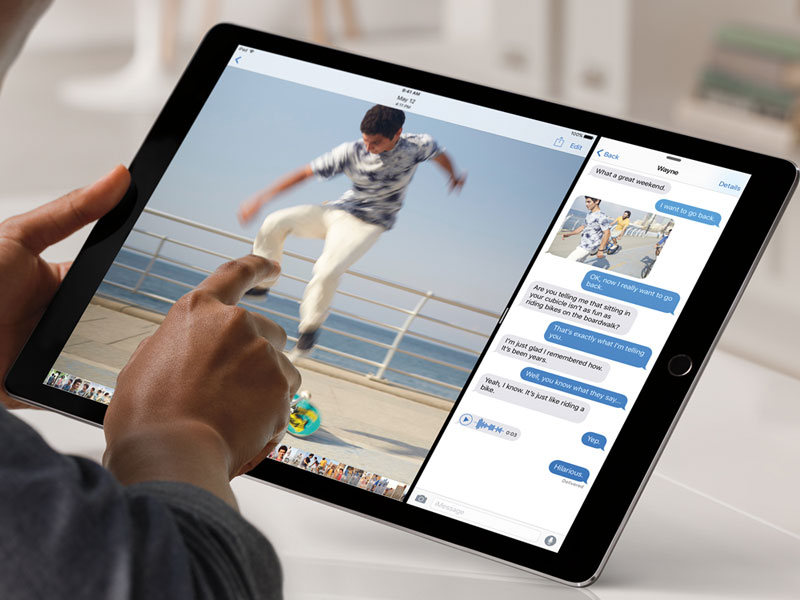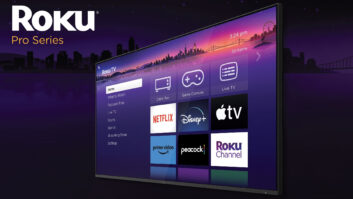
Apple’s iPhone 6s and 6s Plus will give consumers enough reasons to upgrade their iPhones and maintain Apple’s momentum.
The 12.9-inch iPad Pro signals Apple’s intent to reverse declining iPad sales, in large part through increased enterprise penetration with a tablet that competes with laptops. And the new Apple TV is now competitive with other set-top streaming devices, though only Apple aficionados are likely to upgrade to the new device because of its price premium.
Those are some of the options offered by industry analysts following Apple’s launch event yesterday. Here’s a sampling of analysts’ opinions:
iPhone 6s, 6s Plus
Frank Gillett, Forrester Research analyst: Despite identical exteriors, Apple’s updated iPhones for 2015 have added enough new features to keep Apple on top of the smartphone heap. The 3D Touch and Taptic feedback will reset the expectations of smartphone owners for how touch devices work, but they’ll be confused by the differences between iPhone and iPad Pro. With the improved cameras and Live Photo, Apple will have no trouble continuing its streak of smartphone leadership.
Ian Fogg, IHS senior director of mobile and telecom: With the iPhone 6s, Apple has introduced many more innovations than it added with last years’ iPhone 6 and 6 Plus. Apple has performed the ultimate conjuring trick: Change everything about the iPhone, but make it look almost identical to the old model, bar the new rose gold color option.
The “off years” where Apple keeps the external look and feel unchanged have included some of the greatest iPhone innovations, despite the appearances to the contrary. For example, the Siri voice assistant launched alongside the iPhone 4S, while the Touch ID sensor and first smartphone 64 bit processor premiered on the iPhone 5S. Apple uses the more powerful components to enable new experiences and build on the iPhone’s appeal. This year followed the pattern. …
The 3D Touch improvements will give existing iPhone owners an important reason to upgrade. As their existing apps are updated with 3D Touch, third-party app developers will market the improvements to their apps which will help Apple communicate the benefits of the iPhone 6S, without Apple having to spend anything on advertising or marketing. …
Fortunately for Apple, the new iPhone 6s inherits extremely strong momentum from its almost year-old predecessor. The old iPhone 6 and 6 Plus continued to sell well even in a season which is normally the iPhone’s weakest. In the second calendar quarter of 2015, Apple shipped 47.5 million iPhone units, up 35 percent on year while also raising iPhone average selling price by 18 percent.
As a result of the extensive improvements included in the iPhone 6S, and the strong shipments of old models in the immediate prior quarter, IHS forecasts Apple will ship 236 million iPhones in 2015, up 23 percent year on year.

Ronald Gruia, Frost & Sullivan director of emerging telecoms: The new iPhones will generate as many replacement sales as did the previous-generation iPhones. There are a few neat new features, and this is testimony of how well Apple is at introducing what I call “incremental innovation.” … The other thing that has not been emphasized a lot is Apple’s installment plans,
starting at $32/month. Moreover, they also introduced a new upgrade program that allows users to upgrade their iPhones each year, with an unlocked phone. Is it a case of Apple taking the play away from the operators? I believe so. …
Fourth-quarter iPhone sales in the U.S. will out-do the year-ago quarter because of these introductions, based on the steady progress that we’ve seen Apple make at increasing its penetration in the global $400-plus smartphone installed base from circa 35 percent in 2011 to 52 percent in 2014. This year, I believe Apple can reach the 55 to 60 percent mark. In the U.S., those figures are much higher.
iPad Pro
Rhoda Alexander, IHS analyst: In a move that echoes eerily of the original iPad launch, which targeted and quickly decimated the netbook market, Apple is going head to head with the full, notebook PC with its latest offering, the iPad Pro.
Rather than relegating the tablet to secondary status, Apple made it clear today that the iPad is still their “vision of the future of personal computing.” Faster and more agile than the majority of notebooks offered by Apple’s competitors, the iPad Pro also boasts higher resolution than most of those products. Keyboard and stylus options aside, the iPad design has touch at its center, with apps and features styled to be easily manipulated with the press of a finger.
Demand for tablets overall, and the iPad in particular, has slowed in the past year, with iPad shipments down year-over-year over the past six quarters. IHS expects overall iPad shipments to reach 51 million units in 2015, a 19 percent drop from 2014 activity. The iPad Pro, with its higher price point, will help to drive a healthy uptick in the average price for iPads, however, and a corresponding revenue kick. Watch for improved iPad numbers in 2016 as supply of the iPad Pro improves and a healthy segment of the 200 million installed iPad users line up for a product refresh.
Eric Smith, Strategy Analytics: At the $799 base price point, the iPad Pro is well-positioned to enjoy success in the growing large-screen tablet segment. The tablet is increasingly turning into a productivity device, capable of competing for PC replacement dollars with two-in-one tablets and large-screen tablets. With multitasking, vast screen real estate, and support for stylus and a physical keyboard, iPad Pro will go toe-to-toe with Window Tablets and PCs meant for enterprise and prosumers.
Ronald Gruia, Frost & Sullivan: I believe that the new iPad models definitely represent a sign that Apple is intent on making a stronger foray into the enterprise space. There were
quite a few hints to substantiate this, starting from Tim Cook’s own presentation (he did bring up the partnerships with Cisco and IBM). The fact that they’ve introduced the Pencil is another hint of the enterprise emphasis. …
The new A9x chip powering the iPad Pro is 64-bit and has 2x memory bandwidth of the A8x. Schiller claimed in today’s presentation that it’s desktop-class. He also mentioned it has 2x graphic performance versus the older A8x. The A9x is also faster than 80 percent of portable PC chips, according to Phil Schiller. … But, obviously, the added pixel power will be very appealing to gamers as well, so it is a device that will appeal to a broad category of end users.
Will Q4 iPad sales out-do the year-ago quarter because of the Ipad Pro and iPad Mini 4? The numbers will depend on how strongly the enterprises will embrace the new models. … A lot of the emphasis was placed on that segment, which Apple believes it can grow. For the consumer segment, the increased uptake is not so clear, albeit the extra capabilities will resonate with gamers, for instance.

Apple TV
Paul Erickson, IHS senior analyst: The new Apple TV is an evolutionary, not revolutionary update. While this is a significant step up for Apple TV from its last model iteration, many of the features are already state-of-the-market. TiVo and others have universal search; Roku, Fire TV, LG, Android TV, and others have voice search; gaming is on other platforms as well. …
This is a credible update to Apple TV that also fails to change the game in the streaming video device market. It brings them in line with the highly competitive status quo of this market. The app platform and enhanced gaming capabilities are tangible updates, but at this time they are debatable as features that significantly change the dialogue on what a streaming box is supposed to do.
A 50 percent to 100 percent premium for an Apple TV device, in a market which has traditionally been in the $50-99 price range, places specific focus on what added value the consumer is paying for. For the iOS device owner, this is less a factor, as Apple TV has enjoyed a strong tie to the iOS user base, and likely $149 to 199 will simply be the new normal for many looking to watch streaming video, see their photos and videos on the TV, and stay within the Apple ecosystem.
For the rest of the world, the majority being non-Apple, and even those iOS device owners on a budget, it will be a question of whether they feel that the gaming capabilities, apps, and perhaps the level of Siri’s intuitiveness (though we haven’t seen enough to indicate that the natural language recognition here is better or worse than any other vendor also using Nuance’s voice rec in the back end in the cloud, just yet) will be worth paying that premium.
My forecasts thus remain conservative on Apple TV.
Ronald Gruia, Frost & Sullivan: Absolutely it will be very competitive with other set-top devices, with the differential being the apps that are being developed (remember, Apple TV
runs tvOS, which is based on iOS. Developers can use all the iOS kits and features like Metal). We saw a sneak preview today with the MLB app, which I thought was great. The tight Siri integration with features such as universal search will be a key differentiator. … The market for these streaming set-top boxes is fairly new. About 17 percent of U.S. homes were streaming content to their TVs utilizing boxes such as Apple TV and Roku last year, and about 6 million the year before. But Apple TV will definitely be the top in the “coolness” factor among these choices for sure.













